Retro Replay Review
Gameplay
Phalanx immediately throws you into the cockpit of the prototype starfighter, entrusting you with tight, responsive controls that are easy to learn yet offer room for mastery. The twin-stick shooting mechanism feels intuitive, letting you weave between incoming fire while lining up precise shots at alien swarms. A subtle inertia system gives the Phalanx just enough momentum to feel weighty without impairing the snappy reflexes required for tougher stages.
(HEY YOU!! We hope you enjoy! We try not to run ads. So basically, this is a very expensive hobby running this site. Please consider joining us for updates, forums, and more. Network w/ us to make some cash or friends while retro gaming, and you can win some free retro games for posting. Okay, carry on 👍)
As you progress through the eight distinct levels, the pacing shifts fluidly from frantic dogfights in the skies over Delia IV’s research colonies to claustrophobic corridors inside the alien hive. Each stage ramps difficulty steadily, introducing new enemy types, environmental hazards, and mini-boss skirmishes that test both your aiming prowess and evasive maneuvers. Checkpoints are generously placed, keeping frustration low while still demanding you learn enemy patterns and level layouts.
The upgrade system is a highlight of Phalanx’s gameplay loop. Standard weapon pickups grant burst-fire lasers, homing missiles, and wide-arc shots, while rare “Phalanx Modules” unlock devastating special attacks or defensive buffs. Collecting and chaining these power-ups encourages replaying earlier levels to discover hidden pick-ups and high-score routes. Combined with bonus lives and score multipliers, the progression creates a compelling risk-and-reward dynamic for completionists and casual pilots alike.
Graphics
Phalanx adopts a sleek, futuristic art style that blends metallic starfighter designs with vibrant alien organic structures. Backgrounds shift from sprawling research outposts and neon-lit docking bays to pulsating cavern walls teeming with bioluminescent flora. Parallax scrolling layers add depth to each scene, giving the impression that your craft is truly hurtling through three-dimensional space as enemies swarm around you.
Particle effects and explosions are crisp and satisfying. Laser beams cut through the darkness with bright, streaking visuals, while missile blasts create dynamic shockwaves that ripple across the screen. Boss encounters showcase the engine’s ability to handle dozens of on-screen entities without noticeable dips in frame rate. The color palette smartly contrasts icy blues of human tech with the warm reds and purples of alien architecture, emphasizing the combat between two opposing forces.
On modern hardware, Phalanx runs at a solid, consistent frame rate even when the screen is crowded with projectile hell. Load times between stages are minimal, and resolution scaling options ensure the title looks sharp on both standard displays and ultra-wide monitors. Subtle motion blur and bloom filters add cinematic flair without washing out detail, making each level feel like a carefully staged sci-fi action sequence rather than a static backdrop.
Story
Phalanx is built around a straightforward yet engaging narrative: humanity’s interstellar colonization of Delia IV has gone awry as an unknown alien force overruns the planet’s research facilities. You step into the role of pilot Wink Baufield, a genetically enhanced ace handpicked to man the prototype starfighter—dubbed “Phalanx”—in a last-ditch effort to reclaim the world. The introduction sets the stakes clearly, conveying a sense of urgency and isolation.
Over the course of eight levels, you witness Delia IV’s fall from human stronghold to alien hive, with environmental storytelling peppered throughout. Morsels of data logs and distress calls play as audio skits between stages, hinting at the tragic fate of colonists and the cold pragmatism of the Earth military high command. While not a deep narrative RPG, these interludes provide enough context to keep you invested in each mission’s outcome.
Boss encounters double as story set-pieces, revealing the alien hierarchy through massive war machines and grotesque hive lords. Defeating each boss feels like a narrative victory, punctuated by brief cutscenes that foreground Wink’s determination and the fragile hope for Delia IV’s liberation. The ending ties back to the opening premise, offering a cathartic conclusion that rewards players for mastering the Phalanx and thwarting the alien incursion.
Overall Experience
Phalanx delivers a polished sci-fi shooting experience that appeals to both hardcore shmup veterans and newcomers to the genre. Its blend of tight controls, varied level design, and vibrant graphics makes for adrenaline-fueled sessions, whether you aim to blast through the campaign in one sitting or grind for higher scores and hidden power-ups. The eight-stage structure feels substantial without overstaying its welcome, striking a balance between challenge and accessibility.
Strengths of Phalanx include its responsive handling, rewarding upgrade system, and memorable boss battles. Minor drawbacks lie in occasional repetition of enemy patterns in later acts and a narrative that remains serviceable rather than profound. However, these are offset by the title’s pacing and audiovisual flair, which together create an immersive ride through a besieged alien world.
For players seeking a focused, action-driven space shooter with modern presentation and classic gameplay roots, Phalanx is a strong recommendation. Its approachable learning curve, combined with depth for score-chasing enthusiasts, ensures broad appeal. Strap into the cockpit, prepare for relentless waves, and take down the alien menace—Delia IV’s fate rests squarely on the wings of the Phalanx.
 Retro Replay Retro Replay gaming reviews, news, emulation, geek stuff and more!
Retro Replay Retro Replay gaming reviews, news, emulation, geek stuff and more!

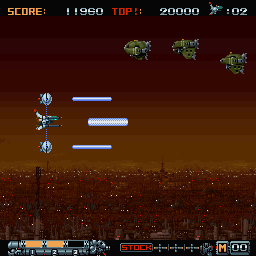
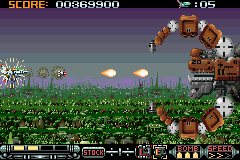
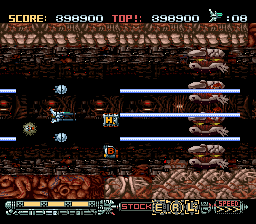
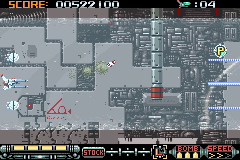
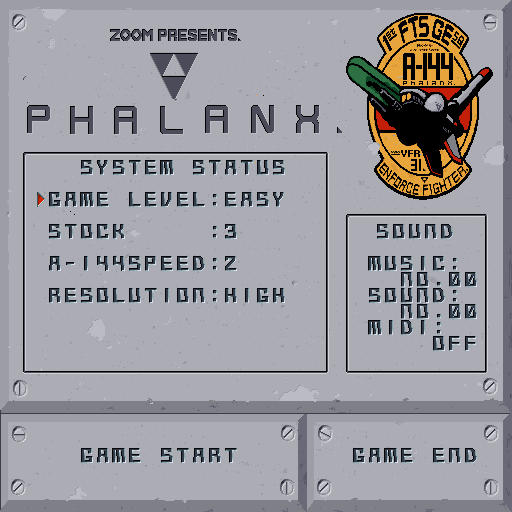



Reviews
There are no reviews yet.